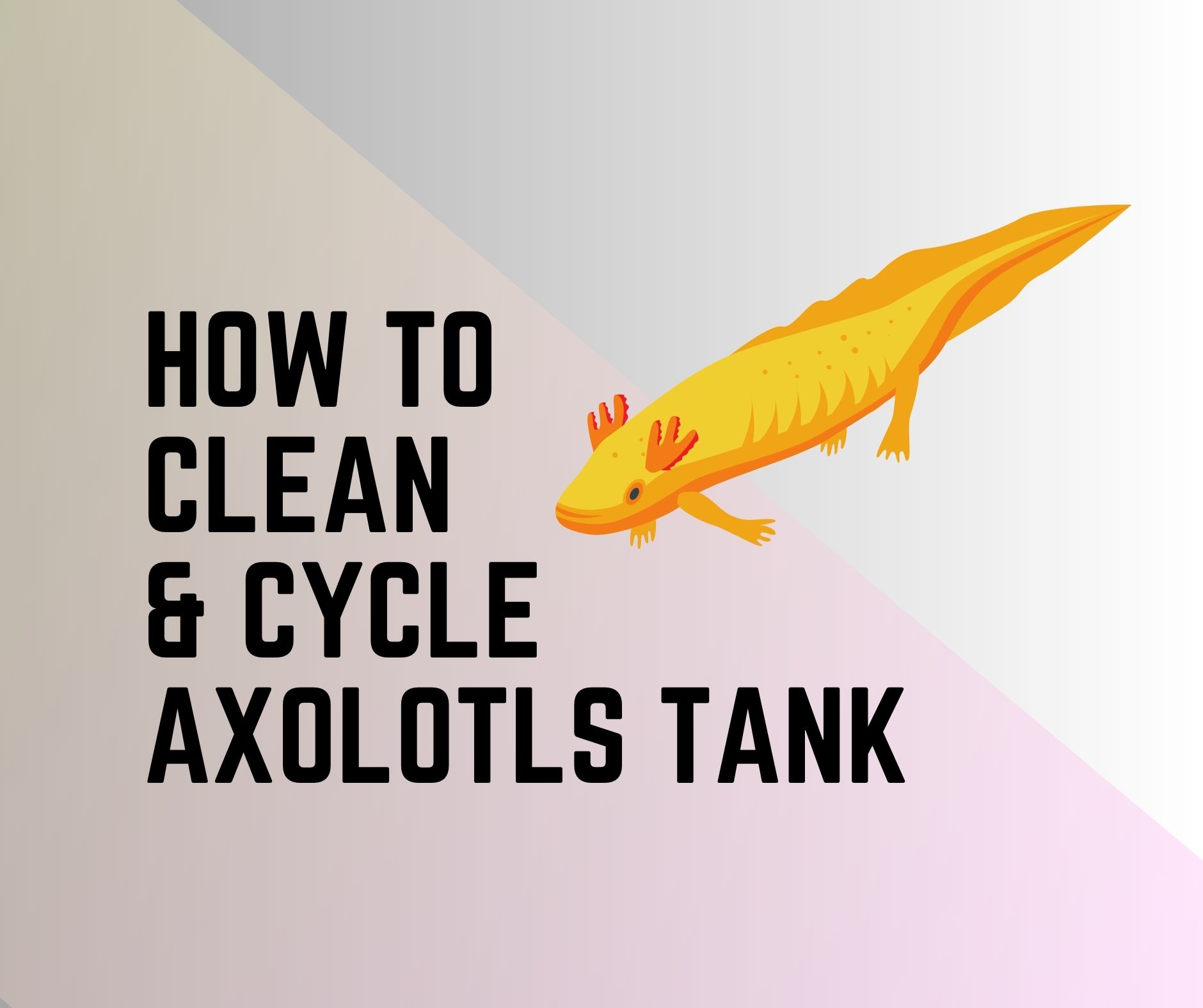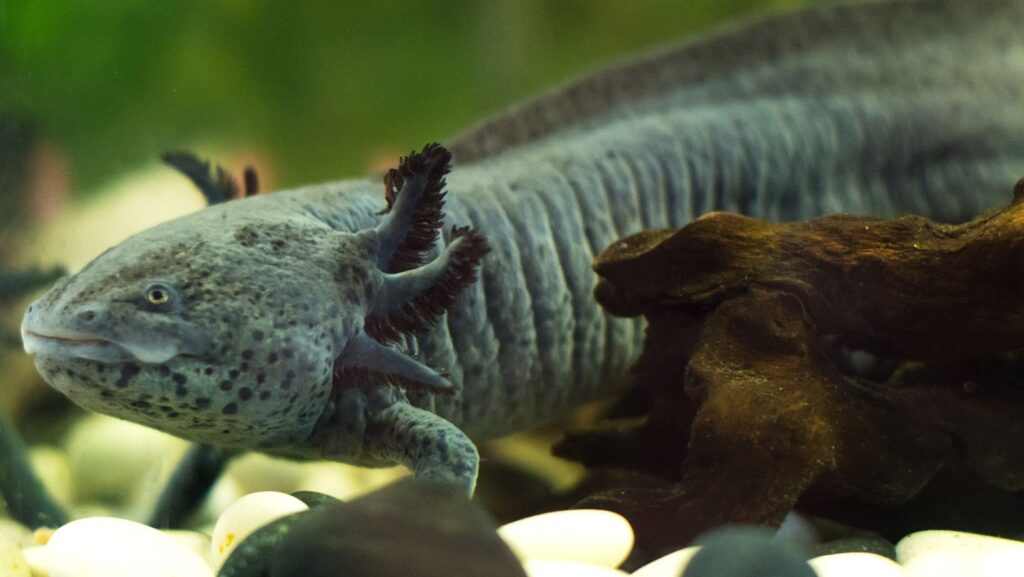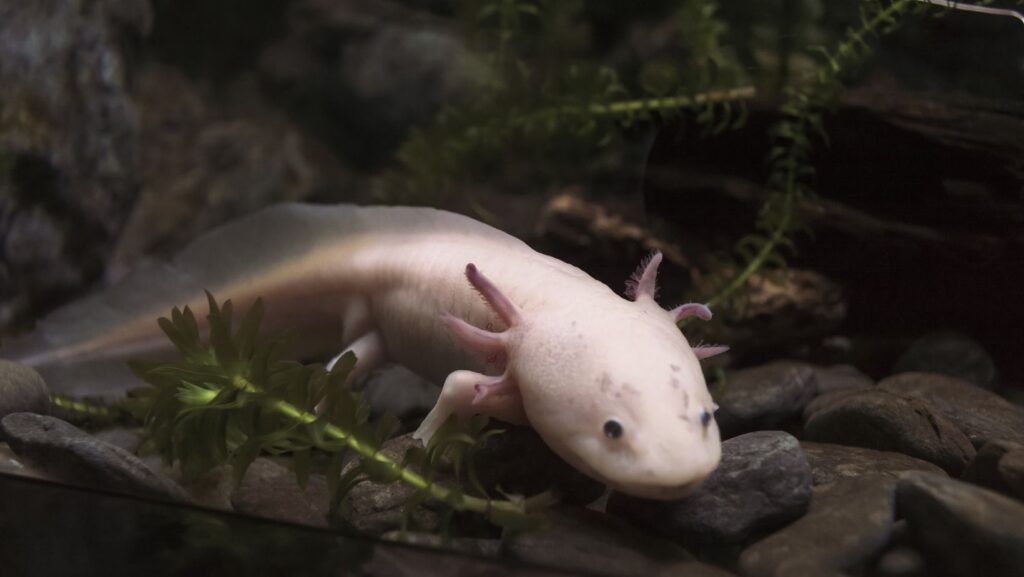
Struggling to clean your Axolotl tank? If yes, you are not alone and have landed in the right place.
Owning Axolotls is rewarding and fascinating, as long as you are giving them the right care. These unique aquatic creatures captivate the hearts of hobbyists, and thus, they are quite popular as pets. Their unusual appearance and captivating behavior can entertain humans for a long. However, while keeping an Axolotl as a pet, it is important to ensure that you are following proper tank maintenance. The right tank environment is important to create a healthy and thriving atmosphere for these extraordinary amphibians. Regularly cleaning and cycling an axolotl’s tank is as important as bathing and grooming for humans, and even a little more.
By understanding how important it is to clean and cycle Axolotl’s tank, pet owners can nurture healthy amphibians. Cleaning the tank helps in preventing algae growth and water contamination. Doing so also lessens the chances of stress-related health issues amongst Axolotls, which are usually very common.
Join us in this article while we explore the Process of Cleaning and Cycling an Axolotls Tank. This comprehensive guide will help you in keeping your pet happy and healthy.

Cleaning Axolotls’ Tank Vs. Cycling Axolotl’s Tank: Is there any difference?
Cleaning and Cycling Axolotls‘ tank are two different processes. The idea of Cleaning Axolotl’s tank involves removing any debris, uneaten food, and waste to maintain a clean environment. The process includes using a small net or siphon to remove all solid waste and excess food from the water. It also involves changing a portion or entire water to maintain its quality. While cleaning Axolotls’ tank, it is important to avoid using any harsh chemicals or detergents.
Whereas on the other hand, Cycling Axolotls’ tank means creating a beneficial bacteria colony in the filtration system of the tank. It may seem tricky, but once you start doing it, the process is quick and simple. Cycling a tank involves creating a stable and healthy nitrogen cycle. Axolotls’ waste produces toxic ammonia, and thus, cycling the tank is important to convert that toxic ammonia into less harmful substances. Cycling an Axolotls’ tank includes adding an ammonia source (pure ammonia or fish food) into the tank to feed the beneficial bacteria. After some time of doing so, the bacteria will establish and thus convert the ammonia into nitrites and nitrates. This process, though, can take multiple days to a few weeks but is an important part of Axolotls’ care.

Step-By-Step Process Of Cleaning An Axolotls’ Tank
Here’s a step-by-step process for cleaning an axolotl tank:
- Firstly, gather all the products you will need for cleaning your Axolotls’ tank. The things you may need include a small net/ a siphon, a container/ a bucket, a clean cloth/ sponge, and chlorine-free water.
- Now, prepare a separate container with some clean water. It is where you will temporarily hold your axolotls while you are cleaning their existing tank. The secondary container, however should be big enough for Axolotls to move around. But make sure it has a lid since Axolotls may escape. Transfer the Axolotls gently.
- Before you begin the cleaning process, turn off any electrical equipment, be it filters, heaters, and lights. Doing so is important to avoid any electrical hazards while you are cleaning the tank. Also, remove ant decoratives and accessories from the tank to clean them separately.
- Now take the small net, and insert it into the tank in a way where you can remove any solid waste, uneaten food, or debris. Gently move the net over the substrate and collect the waste.
- Now depending on the water quality, perform a partial water change. As per general recommendation, change approx. 25% to 50% water using a Siphon and transfer it to an empty bucket. If you think the water quality is going extremely bad, remove it entirely.
- Next, take a clean cloth/ sponge and gently wipe the interior tank. Doing so will remove any algae or dirt buildup.
- Further, clean decorations and accessories in another container using a soft brush. Make sure you rinse them thoroughly with dechlorinated water.
- Once you are done cleaning the tank and its components, refill it with fresh, dechlorinated water.
Remember to match the temperature of the new water to the existing tank water. This will prevent temperature shock for the axolotls while you transfer them. Reintroduce Axolotls back to their clean environment. Do not transfer them directly to a full tank, but gradually add water from the tank into the container where you kept them temporarily. This practice is important to allow them to adjust to the new water parameters. Once you are done, switch on the filters, heaters, and lights as necessary. Do keep a check on water parameters regularly and perform routine tank maintenance.
Step-By-Step Method to Cycle Axolotls’ Tank
Here is a step-by-step method to cycle an axolotl tank:
- Firstly, add all the necessary equipment to the Axolotls tank, including a filter, heater (if required), and substrate. Besides that, the tank should be filled well with dechlorinated water.
- Now to begin the tank cycling process, add a source of ammonia for the beneficial bacteria to feed on. You can add a small amount of fish food or a few drops of pure ammonia.
- Further, using an aquarium water test kit, monitor the water parameters. You need to do so throughout the cycling process. Measure ammonia, nitrite, nitrate, pH, and temperature while recording the values, as you will need to track the cycling progress.
- PH – 7.2- 8.0
- Ammonia- 0ppm
- Nitrites- 0ppm
- Nitrates- 5-20ppm
- Let the Axolotls’ tank sit for a few days, and make sure you monitor the water parameters regularly between this phase. Soon enough, the beneficial bacteria will begin to colonize. They will further start converting ammonia into nitrites.
- While the tank cycling process is going on, both ammonia and nitrite levels spike. These spikes are pretty natural, and they indicate that the beneficial bacteria are working.
- You will now observe a decrease in nitrate level as the beneficial bacteria multiply and the Cycle progresses. Do keep the ammonia and nitrite levels in check. If ammonia or nitrite levels are higher than 1 ppm, perform a partial water change with dechlorinated water of a similar temperature. Doing so is important to reduce nitrate level concentration.
- Axolotl tank’s cycling process typically takes several weeks. After some time, you will observe a gradual decrease in ammonia and nitrite levels. However, the nitrate levels will rise.
Once you consistently observe zero ammonia and nitrite levels and some nitrates in the tank, it is an indication that beneficial bacteria have established a stable colony. At this point, the tank is ready for Axolotls, and beneficial bacteria are effectively converting ammonia and nitrites.
How Often Should I Clean My Axolotls Tank?
As a general guideline by expert Axolotl keepers, you should clean your Axolotl tank once every 2 to 4 weeks. However, there’s something more you need to know about:
- Perform partial water changes every 1 to 2 weeks. During that, replace 20% to 30% tank water with dechlorinated water of the exact same temperature. Doing so helps in maintaining water quality and removing accumulated toxins.
- Remove uneaten food, waste, and other debris as and when you notice them.
- Clean or replace the filter media every 2 to 4 weeks.
- Clean, scrub, rinse and dry the tank walls, decorations, and substrate periodically.
- Never use any soap, detergent, or chemical for cleaning Axolotls’ tank.
How Often Should I Cycle My Axolotls’ Tank?
Cycling an Axolotls’ tank isn’t a regular practice but instead a one-time process. When your Cycle an Axolotls’ tank, you establish the beneficial bacteria colony, which helps in breaking down ammonia and nitrite into less toxic nitrate. Until and unless you notice a significant disruption in the water quality in your Axolotls‘ tank, a repeating cycling process is not required.
While introducing new filtration media or while setting up a fresh Axolotl tank, Cycle it. The process will typically take 4 to 8 weeks and regular monitoring of different water parameters.
Cycling your Axolotls’ tank is a crucial step in establishing a healthy aquarium environment. However, unless very necessary, the process needs not to be repeated.
What Happens If I Will Place My Axolotls In A Non-Cycled Tank?
Placing Axolotls in a non-cycled tank can have a negative impact on their overall well-being. Doing so will result in Axolotls’ living in their own waste, and as the ammonia and nitrite levels would continue to rise, it will become risky for the pets. The Ammonia buildup will cause respiratory problems and stress amongst Axolotls.
It, in fact, can also leave ammonia burns on their delicate gills and skin. Whereas as the Nitrite level rises, it will lead to Nitrite poisoning. It can interfere with oxygen transport in Axolotls’ blood leading to oxygen deprivation and sometimes organ damage. Long exposure to poor water quality can weaken Axolotls’ immune system making them susceptible to diseases and infections.
Wrapping up…
Regular cleaning of an Axolotl tank, including partial water changes, debris removal, and filter maintenance, is necessary for their well-being. Whereas, Cycling the tank before introducing Axolotls establishes a beneficial bacteria colony, ensuring a healthy and stable environment.
